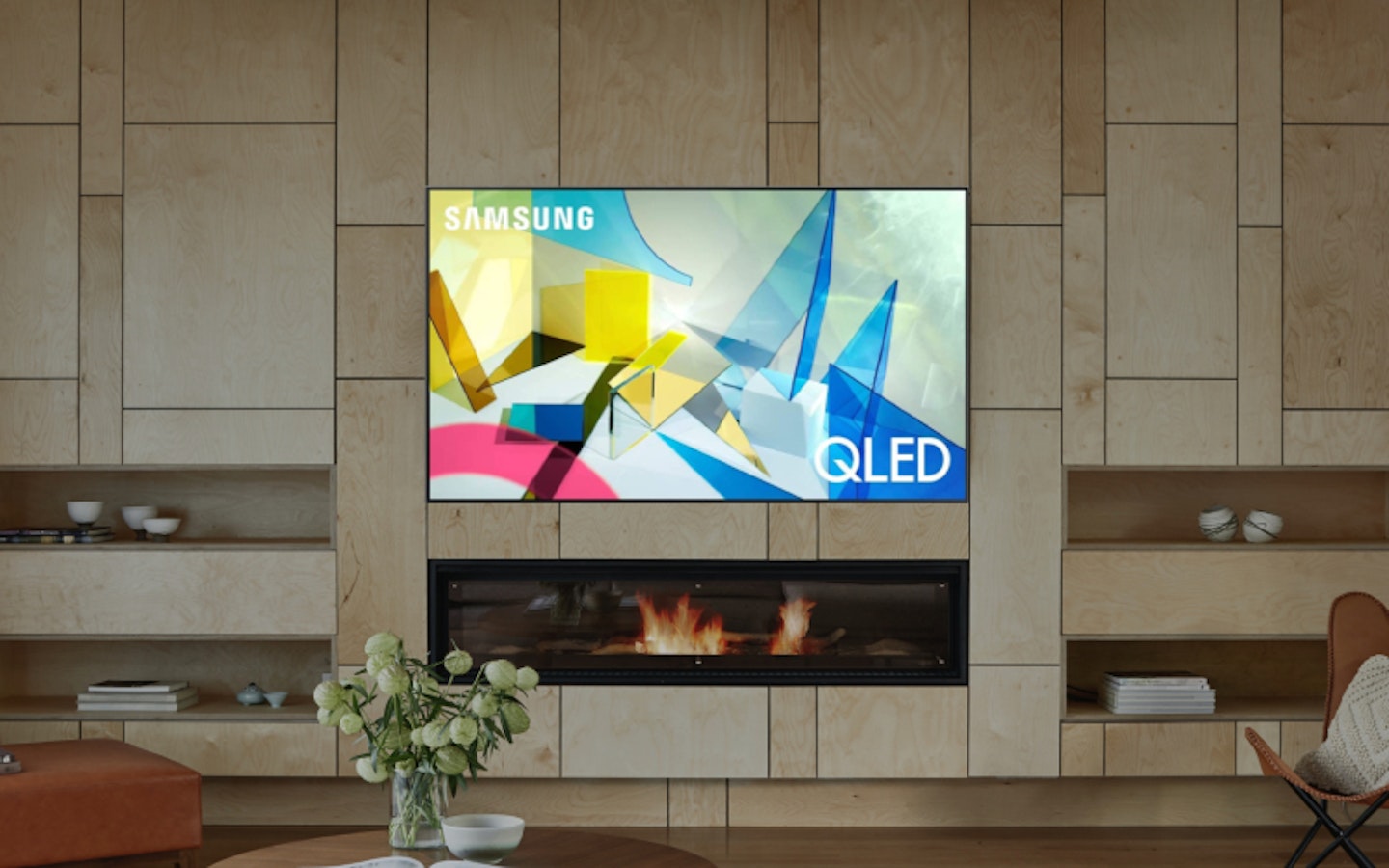If you’re on a mission to upgrade your set to one of the best TVs, it’s likely that you’ve come across Samsung’s Quantum Light-Emitting Diode displays, otherwise known as QLED. But what is QLED? The Samsung QLED TV was highly anticipated by many, hitting the market in 2017 as the ultimate rival to LG’s highly acclaimed OLED tech.
QLED technology operates in a similar way to LED and LCD displays, but with significantly improved backlight technology. The outcome is more vibrant image quality, increased brightness, and wider viewing angles. If you’re looking to find out more, make sure to read on for our guide to figure out what exactly QLED is, how it compares to the other tech and whether it’s right for you.
What is QLED?
QLED is a technology owned and manufactured by Samsung and is an evolution of traditional LED and LCD panels. Unlike LED panels, QLED uses Quantum Dots to produce richer colours and higher luminance.
In other words, QLED TVs offer better image quality and increased brightness compared to LED TVs.
Related: The best 65-inch TV under £1,000
How does QLED work?
Traditional LED displays use a blue LED backlight with a yellow phosphorus filter to transform the emitted light to white.
In QLED TVs, instead of a phosphorus layer, a layer of microscopic ‘Quantum Dots’ is used to emit light directly. These dots range in diameter from to two to 10 nanometres, with larger dots emitting redder hues and smaller dots emitting bluer hues.
The Quantum Dot layer leads to the more efficient light emission, resulting in brighter and more vivid colours.

What are the benefits of QLED?
Brightness: The powerful backlights used in QLED TVs result in an incredibly bright picture. The added Quantum Dots enhance the light even further, through the production of brighter hues. This is highly beneficial if you watch TV in a highly lit room or in a room with many windows.
Colour: Tied in closely with QLED brightness is the tech’s colour performance. Samsung’s technology offers incredible vibrancy and colour volume with smooth gradients, meaning that images are lifelike and free from colour distortion or blotchiness.
More screen sizes: The variability in TV size is a huge upside to QLED TVs that can’t be found in competitors such as OLED. When asking 'what is QLED?' when it comes to size options, these TVs are typically available in a wider range of sizes. The Samsung Q60T QLED is available in seven sizes, ranging from 43 to 85-inches, whereas both the LG CX is available in only four, from 48 to 77-inches.
Related: The best 55-inch TVs
What is the difference between LED and QLED?
Despite a change in name, the difference between LED and QLED panels is discrete.
Both use LCD panels with LED backlights, but the key difference lies in that fact that QLED TVs use a Quantum Dot layer to improve brightness and colour. This leads to the appearance of richer colours and better contrast ratio.
But what is QLED when it comes to pricing? As it stands, QLEDs are also more expensive than LED TVs. However, the Q60T range by Samsung offers 4K QLED TVs with prices comparable to those of premium LED panels.
Should I buy QLED or OLED?
The answer is – it depends. Your budget, set-up and viewing preferences will all play a role when choosing between QLED and OLED displays.
QLED brings us enhanced brightness and vibrant colours, making it the best option for brightly lit rooms. In contrast, OLEDs do not perform as well in bright rooms. So, if you have limited control of the lightness in your room, QLED is the better option.
You might also opt for QLED if you’re working with a controlled budget. QLED TVs provide a great middle ground in terms of price point, sitting slightly above LEDs but below OLEDs.
Due to its unique ability to shut off individual pixels, OLED offers incredibly high contrast ratios and darker blacks. The result? An unparalleled picture quality that QLED struggles to match. Viewing angles and refresh rates are also consistently better in OLED TVs.
If you’re looking to find out more about OLED panels, be sure to check out our article here.

How long does a QLED TV last?
According to Samsung, your QLED TV should go about seven to 10 years before any noticeable deterioration of visual quality.
Is QLED worth it?
After asking yourself 'what is QLED?' you're convinced it's for you, and If you’re looking for optimal brightness that isn’t impacted by lighting conditions and great colour saturation, then a QLED TV is well worth it.
While QLEDs do not provide the intense clarity and picture quality of OLED TVs, QLEDs are far more affordable, and have a longer lifespan.
Related:
What is Neo QLED?
Neo QLED is Samsung’s 2021 rebrand of their QLED range. The improved range sees the introduction of a MiniLED backlight, which allows for more LEDs to be packed into the TV.
The result is higher brightness, minimal blooming and improved viewing angles. Better shadow details and deeper blacks are also to be expected in the Neo QLED.
The range is currently available for pre-order.
.jpg?ar=16%3A9&fit=crop&crop=top&auto=format&w=1440&q=80)